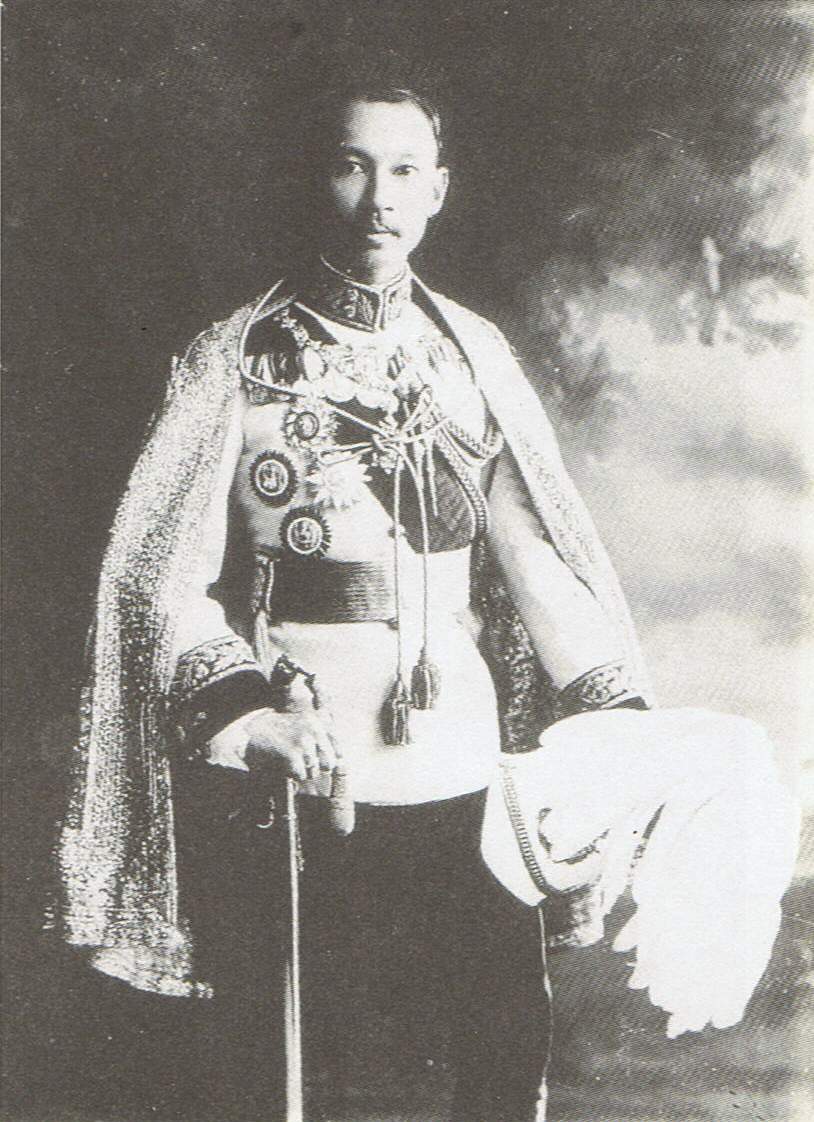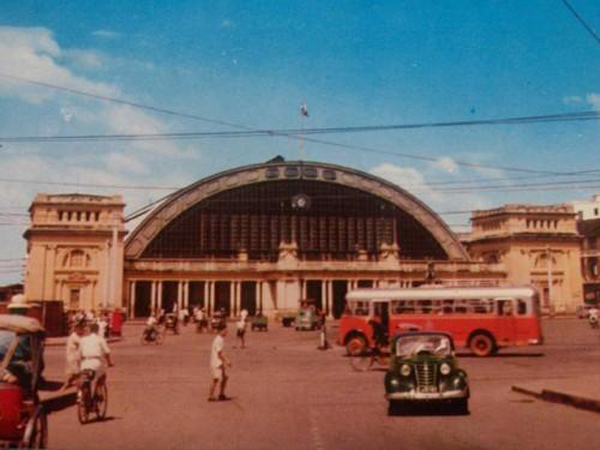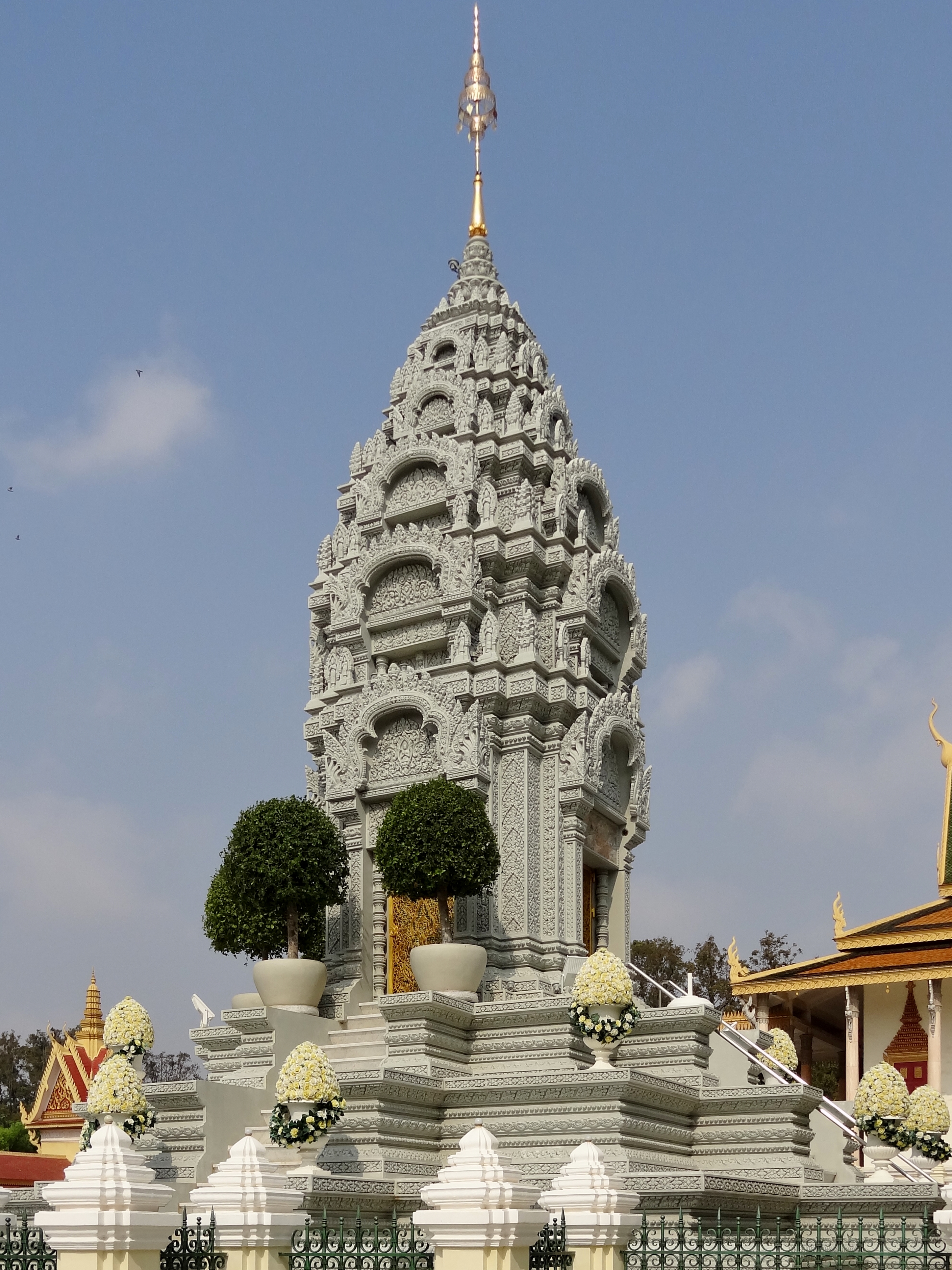|
Lop Buri Station
Lopburi railway station is a class 1 railway station in the centre of Lopburi, Thailand, located away from Hua Lamphong, Bangkok Station. It is a terminus for Greater Bangkok commuter rail, commuter train services on the Northern Line. Two large golden monkey sculptures are located on the platforms as the monkey is the symbol of Lopburi. The opposite side of the station building is an important archaeological site of Lopburi, Wat Phra Sri Rattana Mahathat (Lop Buri), Wat Phra Sri Rattana Mahathat. Lopburi is the current northern end of the Double-track railway, double-track section from Bangkok and further double tracking on the line has begun construction between Lopburi – Pak Nam Pho railway station, Pak Nam Pho. However, to the north of the station where the tracks run adjacent to the Phra Prang Sam Yot, the double tracking was not possible due to the predicted detrimental effects of increased rail traffic on the historical site. As a result, a bypass route was constructed ... [...More Info...] [...Related Items...] OR: [Wikipedia] [Google] [Baidu] |
Lopburi
Lopburi (, , ) is the capital city of Lopburi Province in Thailand. It is about northeast of Bangkok. It has a population of 58,000. The town ('' thesaban mueang'') covers the whole ''tambon'' Tha Hin and parts of Thale Chup Son of Mueang Lopburi District, a total area of 6.85 km2. History Chronology The city has a history dating back to the Dvaravati period more than 1,000 years ago.Higham, C., 2014, ''Early Mainland south-east Asia'', Bangkok: River Books Co., Ltd., According to the ''Northern Chronicles,'' Lavo was founded by Phraya Kalavarnadishraj, who came from Takkasila in 648 CE. According to Thai records, Phraya Kakabatr from Takkasila (it is assumed that the city was Tak or Nakhon Chai Si) set the new era, Chula Sakarat in 638 CE, which was the era used by the Siamese and the Burmese until the 19th century. His son, Phraya Kalavarnadishraj founded the city a decade later. Lopburi, or Lavapura as it then was, was under the rule of the rising Angk ... [...More Info...] [...Related Items...] OR: [Wikipedia] [Google] [Baidu] |
Thailand
Thailand, officially the Kingdom of Thailand and historically known as Siam (the official name until 1939), is a country in Southeast Asia on the Mainland Southeast Asia, Indochinese Peninsula. With a population of almost 66 million, it spans . Thailand Template:Borders of Thailand, is bordered to the northwest by Myanmar, to the northeast and east by Laos, to the southeast by Cambodia, to the south by the Gulf of Thailand and Malaysia, and to the southwest by the Andaman Sea; it also shares maritime borders with Vietnam to the southeast and Indonesia and India to the southwest. Bangkok is the state capital and List of municipalities in Thailand#Largest cities by urban population, largest city. Tai peoples, Thai peoples migrated from southwestern China to mainland Southeast Asia from the 6th to 11th centuries. Greater India, Indianised kingdoms such as the Mon kingdoms, Mon, Khmer Empire, and Monarchies of Malaysia, Malay states ruled the region, competing with Thai states s ... [...More Info...] [...Related Items...] OR: [Wikipedia] [Google] [Baidu] |
State Railway Of Thailand
The State Railway of Thailand (SRT) (, abbrev. รฟท., ) is the state-owned rail operator under the jurisdiction of the Ministry of Transport (Thailand), Ministry of Transport in Thailand. History The SRT was founded as the Royal State Railways of Siam (RSR) in 1890. Chulalongkorn, King Chulalongkorn ordered the Department of Railways to be set up under the Department of Public Works and Town and Country Planning. Construction of the Bangkok railway station, Bangkok-Ayutthaya railway station, Ayutthaya railway (), the first part of the Northern Line, was started in 1890 and inaugurated on 26 March 1897. The Thon Buri railway station, Thon Buri-Phetchaburi railway station, Phetchaburi line (), later the Southern Line, was opened on 19 June 1903. The first railway commander of the RSR was Purachatra Jayakara, Prince Purachatra Jayakara, Prince of Kamphaengphet. The Northern Line was originally built as , but in September 1919 it was decided to standardize on and the Northern ... [...More Info...] [...Related Items...] OR: [Wikipedia] [Google] [Baidu] |
Ministry Of Transport (Thailand)
The Ministry of Transport ( Abrv: MOT; , ) is the ministry of the Government of Thailand responsible for the development, construction, and regulation of the nation's land, marine, and air transportation systems. History The Ministry of Transport was previously known as the Ministry of Communications (although the name is the same in Thai), and was founded in 1941. Its English name was changed to the Ministry of Transport in 2002, when the Reorganisation of Ministries, Government Agencies and Departments, B.E. 2545 Act came into force. It stipulated that the Ministry of Transport (the former Ministry of Communications) would have overall responsibility for transportation, transportation-related businesses, traffic planning, and transport infrastructure development. , the ministry is headed by Transport Minister Suriya Juangroongruangkit. Organization The MOT is composed of ministry departments and profit-making state enterprises. Departments * Office of the Minister * Office o ... [...More Info...] [...Related Items...] OR: [Wikipedia] [Google] [Baidu] |
Chiang Mai Main Line
Chiang Mai Main Line is a main line of the Northern Line operated by State Railway of Thailand that connects between Hua Lamphong railway station in the central and Chiang Mai railway station in the north, passing through many provinces. It is the second longest railway line in Thailand, after Su-ngai Kolok Main Line. Notable services include the Nakhon Phing Express, the first class train serving the line. Many accidents have occurred on the line in recent years, prompting renovation work to commence on the track in late 2013, finally reopening on 2 December 2013. History Timeline Name changes Services Notable railway stations * Bang Sue Junction - The largest freight yard in Thailand and hence the Phahonyothin main freight terminal. There is also a locomotive depot. * Ayutthaya station - Northern Bangkok suburban station. High passenger revenue, second only to Bangkok station. * Ban Phachi Junction - A major junction, where the Northern and Northeastern lines ... [...More Info...] [...Related Items...] OR: [Wikipedia] [Google] [Baidu] |
Hua Lamphong
Bangkok (Hua Lamphong) railway station (, ) is a railway station in Pathum Wan, the former central passenger terminal in Bangkok and the former railway hub of Thailand. It is in the center of the city in the Pathum Wan district, and is operated by the State Railway of Thailand (SRT). Long distance trains moved to the new central station at Krung Thep Aphiwat Central Terminal in 2023. Naming The station was officially referred to by the State Railway of Thailand as Bangkok railway station or ''Sathani Rotfai Krung Thep'' (สถานีรถไฟกรุงเทพ) in Thai. Hua Lamphong () was originally the informal name of the station, used by locals, tourist guides and the public press. In all documents published by the State Railway of Thailand (such as train tickets, timetables, and tour pamphlets) the station is uniformly transcribed as Krungthep (กรุงเทพ) in Thai. As of 19 January 2023, following the opening of Krung Thep Aphiwat Central Terminal, th ... [...More Info...] [...Related Items...] OR: [Wikipedia] [Google] [Baidu] |
Greater Bangkok Commuter Rail
Greater Bangkok commuter rail is a commuter rail system in Bangkok Metropolitan Region, Phra Nakhon Si Ayutthaya Province, Saraburi Province, Lopburi Province, Suphan Buri Province, Ratchaburi Province, Chacheongsao Province, Nakhon Nayok Province, Prachinburi Province, and Samut Songkhram Province. It runs from and to the outskirts of the city during the rush hour, and the passenger number is high. It is operated by State Railway of Thailand (SRT) that also operates inter-city rail. Commuter rail services always have number 3xx. Most of the system are double track. Current lines Maeklong Railway The Maeklong Railway (also known as the Mae Klong Railway) is a (Metre gauge) railway that runs for nearly between Wongwian Yai, Bangkok, and Samut Songkhram in Central Thailand. The line consist of two sections: the eastern Mahachai Line, which runs between Wongwian Yai and Mahachai; and the Ban Laem Line, which runs between Ban Laem and Maeklong. The two stretches a ... [...More Info...] [...Related Items...] OR: [Wikipedia] [Google] [Baidu] |
Wat Phra Sri Rattana Mahathat (Lop Buri)
A wat (, ; , ; , ; ; , ) is a type of Buddhist and Hindu temple in Cambodia, Laos, East Shan State (Myanmar), Yunnan (China), the Southern Province of Sri Lanka, and Thailand. Etymology The word ''wat'' is borrowed from the Sanskrit ''vāṭa'' (Devanāgarī: वाट), meaning "enclosure". The term has varying meanings in each region, sometimes referring to a specific type of government-recognised or large temple, other times referring to any Buddhist or Hindu temple. Overview In Buddhism, a ''wat'' is a Buddhist sacred precinct with vihara, a temple, an edifice housing a large image of Buddha and a facility for lessons. A site without a minimum of three resident ''bhikkhu''s cannot correctly be described as a wat although the term is frequently used more loosely, even for ruins of ancient temples. As a transitive or intransitive verb, ''wat'' means to measure, to take measurements; compare ''templum'', from which ''temple'' derives, having the same root as ''templa ... [...More Info...] [...Related Items...] OR: [Wikipedia] [Google] [Baidu] |
Double-track Railway
A double-track railway usually involves running one track in each direction, compared to a single-track railway where trains in both directions share the same track. Overview In the earliest days of railways in the United Kingdom, most lines were built as double-track because of the difficulty of co-ordinating operations before the invention of the telegraph. The lines also tended to be busy enough to be beyond the capacity of a single track. In the early days the Board of Trade did not consider any single-track railway line to be complete. In the earliest days of railways in the United States most lines were built as single-track for reasons of cost, and very inefficient timetable working systems were used to prevent head-on collisions on single lines. This improved with the development of the telegraph and the train order system. Operation Handedness In any given country, rail traffic generally runs to one side of a double-track line, not always the same side as ... [...More Info...] [...Related Items...] OR: [Wikipedia] [Google] [Baidu] |
Pak Nam Pho Railway Station
Pak Nam Pho railway station is a railway station in the Pak Nam Pho Sub-district, Nakhon Sawan City, Nakhon Sawan. It is 250.559 km from Bangkok railway station and is a class 1 railway station. It is on the Northern Line of the State Railway of Thailand. The station opened on 31 October 1905 as part of the Northern Line extension from Lopburi to Pak Nam Pho. The line continued to Phitsanulok in 1908. Originally, this was the railway station for Nakhon Sawan City as passengers would alight here and cross the Chao Phraya River The Chao Phraya River is the major river in Thailand, with its low alluvial plain forming the centre of the country. It flows through Bangkok and then into the Gulf of Thailand. Etymology Written evidence of the river being referred to by the ... to reach the city, however its main purpose was removed as the new railway station built at Nong Pling replaced its role. Today, the station acts as a rail yard, a railway maintenance centre, and a junct ... [...More Info...] [...Related Items...] OR: [Wikipedia] [Google] [Baidu] |
Phra Prang Sam Yot
Phra Prang Sam Yot, also known as Phra Prang Sam Yod, is a 13th-century Angkorian temple in Lopburi, Thailand. The temple is currently a popular tourist destination. Description The temple was built by King Jayavarman VII of the Khmer Empire in the early 13th century. Jayavarman intended for the temple to be an important location in the royal cult surrounding himself, as it would increase the legitimacy of his rule. In addition, the temple served to showcase the prestige of the Khmer Empire in Lopburi (then known as Lavo) as it had only recently captured the city from its Cham and Mon rivals. One prominent statue in the temple was dedicated by Jayavarman to "Jayabuddhamahanatha", which is translatable to "Victorious Buddha, the Great Protector" - further evidence of the temple's martial origins. Built along the lines of contemporaneous Khmer architecture, the temple is made from brick with a stucco exterior, the latter possibly being inspired by Mon architectural tradition. The s ... [...More Info...] [...Related Items...] OR: [Wikipedia] [Google] [Baidu] |




